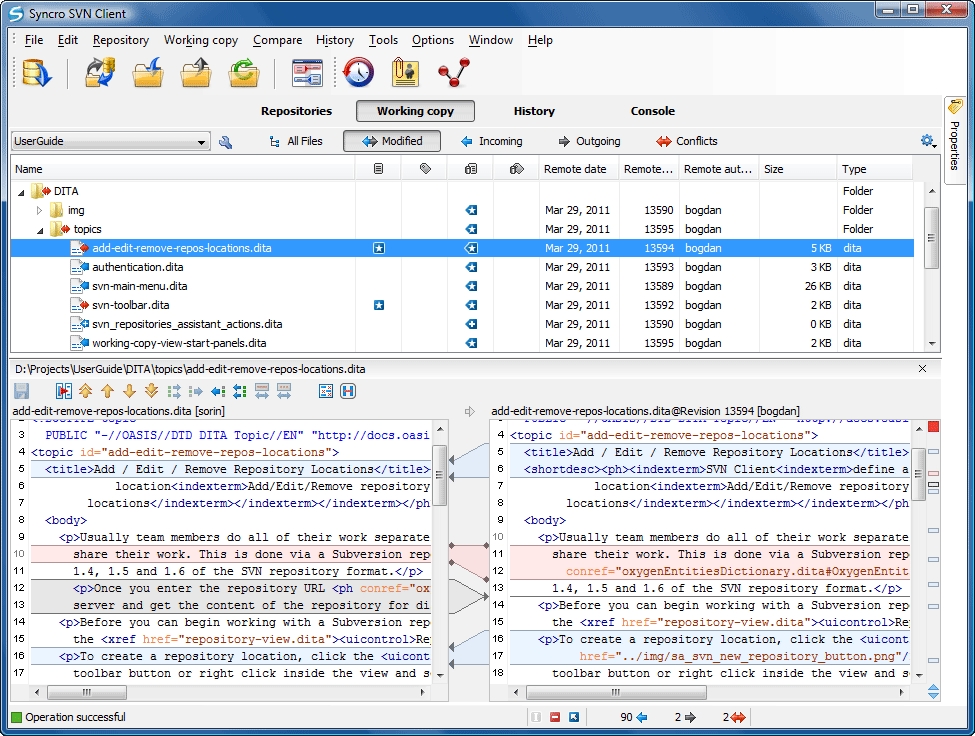

Print - Finished updating %s to revision: %d % (new_update_path, revision.number)ĭef group_sparse_checkout(options, client, repo_url, sparse_path_list, local_checkout_root):Ĭheckout_path = commonprefix(sparse_path_list)Ĭheckout_path = sparse_path_list.split(os.sep)

Svn checkout update#
Print Will now update with recursive:, new_update_path New_update_path = os.path.join(new_update_path, leaf_segment) # Update the leaf path segment, fully-recursive Sparse_update_with_feedback(client, new_update_path) New_update_path = os.path.join(new_update_path, path_segment) Path_segments = sparse_path.split(os.sep) Revision_list = client.update(new_update_path, depth=)ĭef sparse_checkout(options, client, repo_url, sparse_path, local_checkout_root): Password = getpass.getpass(Enter SVN password for user %s: % options.svn_username)Ĭlient.callback_get_login = lambda realm, username, may_save: (True, options.svn_username, password, True)ĭef sparse_update_with_feedback(client, new_update_path): Return sep.join(x for x in takewhile(allnamesequal, bydirectorylevels)) # XXX The os.monprefix() function does not behave as expected!īydirectorylevels = zip(*) Update with depth=infinity for the leaf directories Update with depth=empty for intermediate directoriesģ. Given a list of paths in an SVN repository, it will:Ģ. This script makes a sparse checkout of an SVN tree in the current working directory. I wrote a script to automate complex sparse checkouts. svn – Can you do a partial checkout with Subversion?
Svn checkout full#
… sparse directories (or shallow checkouts) … allows you to easily check out a working copy-or a portion of a working copy-more shallowly than full recursion, with the freedom to bring in previously ignored files and subdirectories at a later time. Subversion 1.5 introduces sparse checkouts which may be something you might find useful. This is an older and less flexible way to achieve a similar effect: svn checkout -non-recursive svn update trunk/foo That way you can see which directories exist in the repository.Īs mentioned in answer, you can also do a non-recursive checkout. I believe the following should do it: svn checkout -depth empty svn update -set-depth infinity proj/fooĪlternatively, -depth immediates instead of empty checks out files and directories in trunk/proj without their contents. Indeed, thanks to the comments to my post here, it looks like sparse directories are the way to go.
Svn checkout code#
Tom adds code for search operation and his code looks like trunk]$ svn diffSvn – Can you do a partial checkout with Subversion? Meanwhile, over in the trunk, Tom decides to implement search operation. M jerry_branch]$ svn commit -m "Added sort operation" Jerry compiles and tests his code and is ready to commit his jerry_branch]$ make array Printf("Array has following elements\n") The above command will produce the following result.įprintf(stderr, "Number of elements must be less than %d\n", MAX) Jerry's modified code looks like project_repo]$ cd jerry_branch]$ cat array.c Now Jerry is working in his private branch. Jerry is not happy because of the conflict, so he decides to create a new private project_repo]$ lsīranches tags project_repo]$ svn copy trunk branches/jerry_branchĪ + project_repo]$ svn commit -m "Jerry's private branch"
Svn checkout how to#
In this section, we will see how to create, traverse and merge branch. Let us suppose you have released a product of version 1.0, you might want to create new branch so that development of 2.0 can be kept separate from 1.0 bug fixes. It is useful when someone wants the development process to fork off into two different directions. Branch operation creates another line of development.


 0 kommentar(er)
0 kommentar(er)
